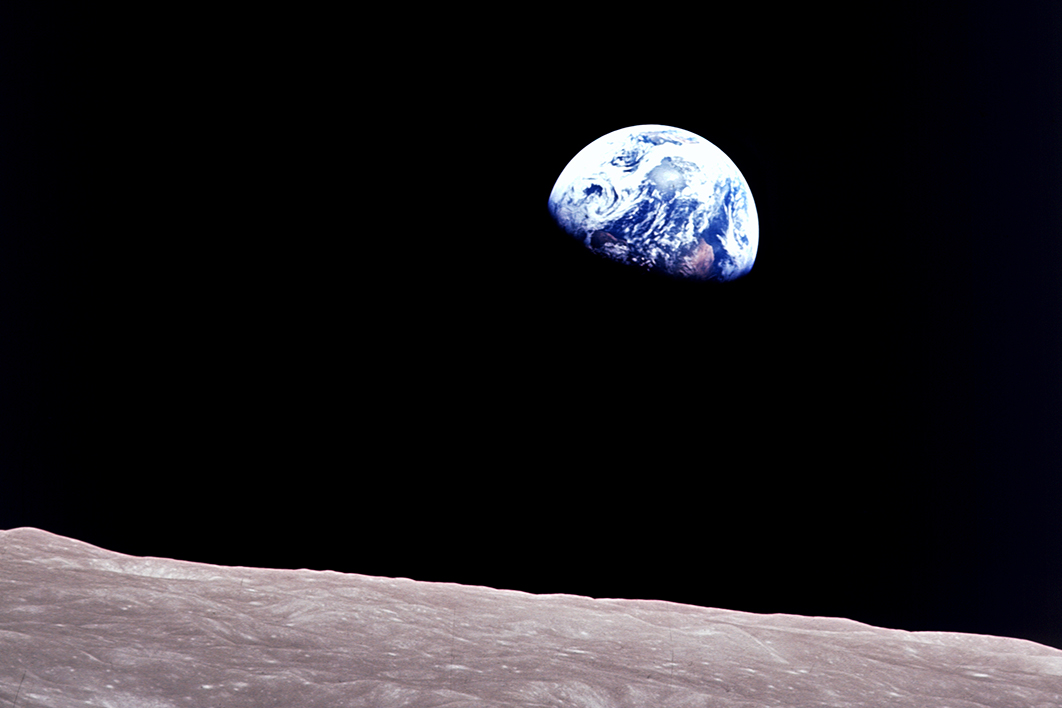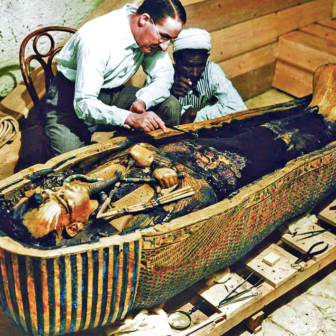Fifty years ago the Americans missed their chance when they planted an American flag in the lunar dust around Apollo 11. The bulky astronauts bounding around the airless moon never looked so small as when they saluted the stars and stripes, a bedraggled piece of cloth held aloft by a horizontal rod. It was a diminishing moment in an otherwise impressive mission, and it looks smaller with the years. It seems that Horace Walpole was right when he wrote in 1783: “Could we reach the moon, we should think of reducing it to a province of some European kingdom.”
Apollo 11 was a magnificent technological feat that also stirred a common humanity. There were times when the sheer wonder of leaving our planet to land on another world transcended the grubby, aggressive cold war politics that fuelled the space race. The plaque left on the moon depicted the two hemispheres of Earth and assured the solar system that Apollo 11 “came in peace for all mankind.” But nationalism was the mud on their boots, and they tramped it in.
A few hours after the first moonwalk, an uncrewed Soviet spacecraft, Luna 15, crash-landed on the moon, thus giving the Americans a satisfying first spike on the graph of their newly installed lunar seismometer. Luna 15 took the space race to the finish line, for it was designed to retrieve Russian samples of moon rock before the Americans could return with their own.
The rhetoric of space exploration was so future-oriented and cold war politics so competitive that NASA underestimated the power of looking back. In 1968, the historic Apollo 8 mission launched humans beyond Earth’s orbit for the first time, out and across the void and into the gravitational power of another heavenly body. For three lunar orbits, the three astronauts studied the strange, desolate, cratered surface below them and then, as they came out from the dark side of the moon for the fourth time, they looked up and gasped:
Frank Borman: Oh my God! Look at that picture over there! Here’s the Earth coming up. Wow, that is pretty!
Bill Anders: Hey, don’t take that, it’s not scheduled.
They did take the photo, excitedly, and it became famous, perhaps the most famous photograph of the twentieth century, the blue planet floating alone, finite and vulnerable in space above a dead lunar landscape. Frank Borman said: “It was the most beautiful, heart-catching sight of my life.” And Bill Anders declared: “We came all this way to explore the moon, and the most important thing is that we discovered the Earth.”
In his fascinating book Earthrise (2010), British historian Robert Poole explains that this was not supposed to happen. The cutting edge of the future was to be in space; Earth was the launch pad not the target. Leaving the Earth’s atmosphere was seen as a stage in human evolution comparable to our amphibian ancestor crawling out of the primeval slime onto land. And now, “after thousands of years of life on this planet” (declared the Los Angeles Times) “Man has broken the chains that bind him to Earth.” Humans had left the realm of solids and gases for gravity-free, oxygen-free space, for a new frontier and a beckoning future. The weightless astronauts, even in their clumsy spacesuits, were liberated. Furthermore, their new dominion was seen to offer what Neil Armstrong called a “survival possibility” for a world shadowed by the nuclear arms race. In the words of Toy Story’s Buzz Lightyear (sometimes hilariously confused with Buzz Aldrin), the space age looked to infinity and beyond!
So the power of the view back towards Earth took NASA by surprise. A few years later, in 1972, a photo taken by the Apollo 17 mission and known as The Blue Marble became one of the most reproduced pictures in the world, showing the Earth as a luminous, breathing garden in the dark void. Earthrise and The Blue Marble had a profound impact on environmental politics and sensibilities.
Within a few years, the American scientist James Lovelock put forward “the Gaia hypothesis”: that the Earth is a single, self-regulating organism. In the year of the Apollo 8 mission, Paul Ehrlich published his book The Population Bomb, an urgent appraisal of a finite Earth. During the years of the moon missions, British economist Barbara Ward wrote Spaceship Earth and Only One Earth, revealing how economics failed to account for environmental damage and degradation, and arguing, like Ehrlich, that exponential growth could not continue forever. Earth Day was established in 1970, a day to honour the planet as a whole, a total environment needing protection.
Then, in 1972, the Club of Rome released its controversial and enormously influential report The Limits to Growth, which sold over thirteen million copies and went into over thirty translations. In their report, Donella Meadows and Dennis Meadows wrestled with the contradiction of trying to force infinite material growth on a finite planet. The cover of their book depicted a whole Earth, a shrinking Earth. Shrinking the Earth became the title of a 2016 book by the American environmental historian Donald Worster about modern humanity’s ill-fated quest for endless growth and how the view of Earth from space initiated a change in consciousness comparable to the Copernican and Darwinian revolutions.
When the Apollo 14 astronaut Alan Shepard looked up from the lunar surface and regarded the Earth high in the sky, he was struck by “that thin, thin atmosphere, the thinnest shell of air hugging the world.” He looked at his home in the blackness and felt its extreme fragility, and he wept.
In the fifty years since Apollo 11, we’ve learned a lot about that precious atmosphere. Earth systems science emerged in the second half of the twentieth century and fostered a keen understanding of planetary boundaries — thresholds in planetary ecology — and the extent to which the human enterprise is threatening or exceeding them. The same industrial capitalism that unleashed carbon enabled us to extract ice cores from the poles and construct a deep history of the air. At least we now understand our predicament even if we are perilously slow to act. The blue planet is suffering the sixth great extinction and a climate emergency. The fossil fuels that got humans to the moon now endanger our civilisation. But fifty years after Apollo 11, we might hold onto the idea that the space race also unexpectedly quickened our race to save the Earth.
Last week I watched Todd Douglas Miller’s fiftieth anniversary documentary, Apollo 11, and was mesmerised by the real footage and voiceovers, and felt all the anxiety and suspense even though I knew what would happen next. The surviving 65mm footage surpassed all the efforts of Hollywood (in the 2018 film First Man) to represent the awesome power of the Saturn V rocket launch. I was moved by how mechanical and brittle was the whole grand enterprise. They were shooting at a moving target in a machine with 5.6 million moving parts. As the astronauts boarded the spaceship and the countdown proceeded, technicians were fiddling with a leaking liquid hydrogen valve on the rocket below them. In the Houston control room, slide rules were used dexterously. When Armstrong stepped out for the moonwalk, he bumped and broke a switch that was crucial to the operation of the ascent engine, and it was fixed with a ballpoint pen. The lunar module, Eagle, was a tinfoil Tardis. These vulnerable humans were camping at the edge of the universe.
I was twelve at the time of the Apollo 11 voyage and found myself in a school debate about whether the money for the moon mission would be better spent on Earth. I argued that it would be, and my team lost. But what other result was allowable in July 1969? Conquering the moon, declared Dr Wernher von Braun, Nazi scientist turned US rocket maestro, assured Man of immortality. I followed the Apollo missions with a sense of wonder, staying up late to watch the Saturn V launch, joining my schoolmates in a large hall with tiny televisions to witness Armstrong take his Giant Leap, and saving full editions of the Age newspaper reporting those fabled days. I’m reading them now: “Target Moon — here they come,” “Here we go round the Moon,” “Down to the Moon — Spacemen set for walk into history,” “Apollo hurtles for home — Nixon will see that big splash.”
Other news was pushed to the margins: about senator Edward Kennedy leaving the scene of a fatal car crash at Chappaquiddick Island, about the latest “light casualties” in Vietnam, about the immigration minister (Mr Snedden) welcoming a significant rise in the number of refugees settling in Australia, about the arrival of seven Nauruans in Australia for eye operations, about efforts to save the Great Barrier Reef from oil drilling. One telecommunications company took out a full-page advertisement comparing Neil Armstrong to Captain Cook and thus the moon to Australia as “yet another unknown where intrepid man has now trod.”
But the legendary cartoonist Les Tanner depicted the two astronauts sitting on the moon gazing at Earth and saying: “Funny — it looks like one world!”
Apollo was an astonishing extrapolation of the military-industrial complex, of a cold war superpower blasting even into space. Thus with the eyes of the whole world upon them, with a moment of unity in their grasp, the Americans planted their national flag on the moon. It was the next phase of colonisation, the new frontier, an affirmation of the future. Everything was simulated and rehearsed in advance, every possible problem imagined and solved before it could happen. The day before the launch the crew were still in simulators, practising the future. But NASA did not foresee Apollo’s greatest legacy. It could not imagine the radical effect of seeing the Earth. •




